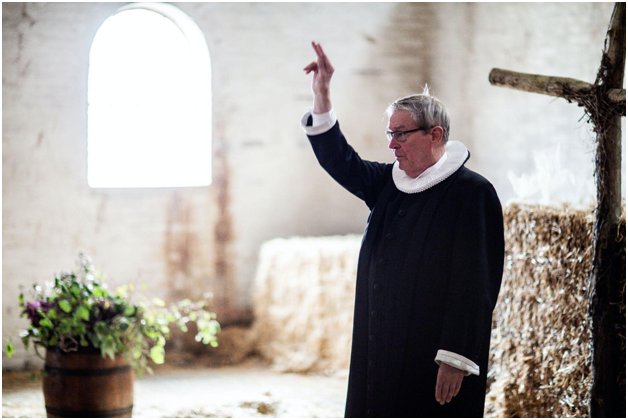Religions across the globe have their own unique yet undeniably glorious days throughout the year which aid in bringing their followers together as one and closer to their higher power or powers. They are days to truly celebrate and ultimately be thankful for the lives they have.
These days not only include holidays, such as Christmas, Hanukkah, or Ramadan, but also days that mark a milestone in a follower’s life. These days typically act as rites of passage, leading and guiding the follower to a sublime connection with God and their religion as a whole.
In several Christian denominations, children go through a rigorous studying practice for several years and, once completed, they go through their “confirmation.”
This is one of the most popular practices in particular Christian churches, but what exactly is it, what is its origin, and how is it celebrated today?
What is Confirmation?
Confirmation is a rite of passage for children within various Christan churches. It is one of the seven holy sacraments and one of the three sacraments of initiation, the other two being baptism and communion.
The age of children going through this rite varies from ages 7 to 18 but is typically 14 in Western churches. These children have previously already gone through baptism and communion, but this particular sacrament is where they significantly strengthen their relationship with God and receive the Holy Spirit.
The Origin of Confirmation
This rite of passage has a deep historical resonance in the Christian religion. There is a specific passage in the Acts of Apostles 8:14-17 that mentions and reflects on its importance:
“Now when the apostles, who were in Jerusalem, had heard that Samaria had received the word of God, they sent unto them Peter and John. Who, when they were come down, prayed for them, that they might receive the Holy Spirit. For he was not as yet come upon any of them; but they were only baptized in the name of the Lord Jesus. Then they laid their hands upon them, and they received the Holy Spirit.”
Then, in Hebrews 6:1-6, there is a difference mentioned between “the teaching about baptisms” and the teaching of “the laying on of hands.” Baptism had already been a long-utilized practice by this point, but this was the first stark difference mentioned between it and what would soon become confirmation– the practice of giving the Holy Spirit.
From these appearances in the New Testament, confirmation quickly grew in recognition, usage, and importance across Christianity in various churches and manners.
Confirmation is also found in the Catechism of the Catholic Church, which summarizes the main beliefs in the Catholic Church. This book form of the religion’s beliefs was written in 1992 by Pope John Paul II, and in paragraphs 1302-1303, there are clarifications of confirmation and its purposes, such as it more firmly unites individuals with Jesus Christ, provides a perfect bond with the Church, and increases the Holy Spirit’s gifts.
Confirmation and Its Celebration in Latin (or Western) Churches Today

Since its beginning, confirmation has made a significant impact on the Church and its parishioners for centuries. Today, there are numerous components interwoven in this joyous occasion, now even including confirmation gifts for girls and boys who successfully complete this rite of passage.
Individuals who look to be confirmed must first attend a series of classes that specifically teach them about their faith, Christian responsibilities, and the sacrament. On top of these classes, students typically must involve themselves in other activities, such as community service, attending confession, and connecting with a particular Saint.
These young students are preparing themselves for not only confirmation but for what comes after it as well. This marks the beginning of their own individual religious journey along with their newly strengthened bond with God.
Once these students successfully complete all necessary tasks, they may go through their confirmation ceremony. A bishop typically conducts this service in a church and the rituals within it can vary depending on the church. For example, in the Roman Catholic church, participants are anointed with oil, while other churches, such as Anglican, do not use the anointment with oil.
Confirmation Gifts for Girls and Boys
When either your child or a loved one’s child has their confirmation, it is truly a time for celebration, admiration, and joy. It took a lot of effort and dedication for them to make it to this pivotal ceremony, so gifting them something special is highly appreciated.
When searching for high-quality personalized confirmation gifts for girls and boys that properly commemorate their rite of passage, look no further than what we offer here at J Devlin. We have several stunning glass options that are handmade by our skilled artisans. Our personalizable glass photo frames, jewelry boxes, and crosses are gifts bound to further the child’s happiness and pride.

